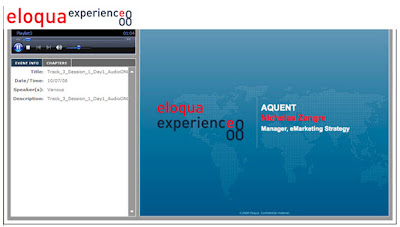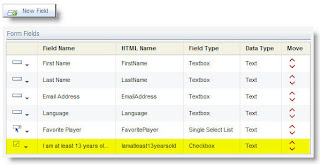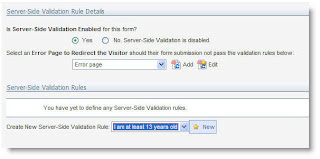 In the campaign that was highlighted in their presentation, an entertaining viral B2B marketing campaign drove lots of interest and engagement, while a carefully structured free trial and nurture campaign moved business travelers and their organizations through to being buyers.
In the campaign that was highlighted in their presentation, an entertaining viral B2B marketing campaign drove lots of interest and engagement, while a carefully structured free trial and nurture campaign moved business travelers and their organizations through to being buyers.At Eloqua Experience 2009, you’ll have a chance to connect with marketers like Paul and Greg, and see campaigns like theirs highlighted in the Markies Gala on Tuesday night. The Concur campaign might fit into a few of the 12 categories, including “Most Creative Marketing Campaign”, “Social Media Marketing Award”, and the “Best Lead Nurturing Program Award”.
I hope you enjoy their presentation – a highlight of the 2008 event
Some highlights from the presentation if you want to use the “Chapters” tab to skip ahead (once the audio has loaded):
1:25 Key Challenges
Needed a unique experience that would bridge the gap between the “end user” – the business traveler – and the buyer, a C-level executive.
3:28 Deployment
Concur created an ad campaign that used the viral element of true tales of business travel to engage with the audience and drive traffic
4:40 Ad Campaign
Some very bold creative that highlighted the crazy stories shared by business travelers – especially for the C-level executives who were targeted
6:01 Microsite
The True Tales of Business Travel microsite was both where the stories were shared, rated, and commented on, and the point to where all the Ad campaigns drove people. Great example of community-generated content in a B2B marketing scenario.
10:40 Tying it Together with a Free Trial
This was the main driver that transitioned people into the lead funnel. A free trial was heavily promoted alongside the Stories campaign in order to draw in the business travelers who were intrigued by the stories
12:54 Mature Campaign
Combining tips and tricks with awareness of whether the individual had logged in and used the product, a maturation and nurturing campaign guided the user and showed value that could be passed to the buying executive in the trial user’s organization.
15:50 Results
The Concur team got some great results out of this campaign – over 106,000 stories were viewed, and 900 people signed up for the trial edition and passed on to the sales team.
Remember, Eloqua Experience is in San Francisco on Nov 2nd - 4th, 2009, and is the event of the year for any marketer focused on marketing automation and demand generation. Hope to see you there.























